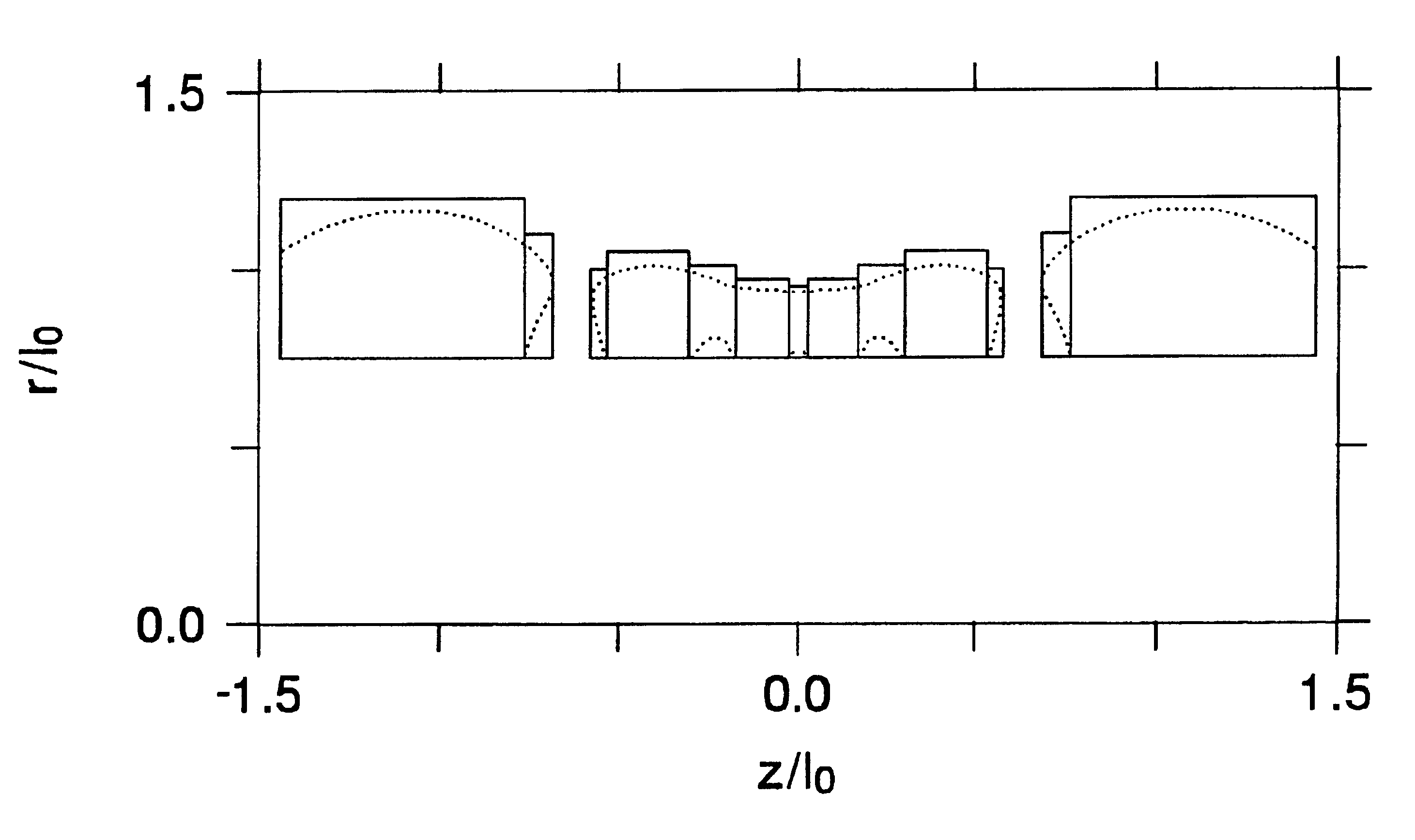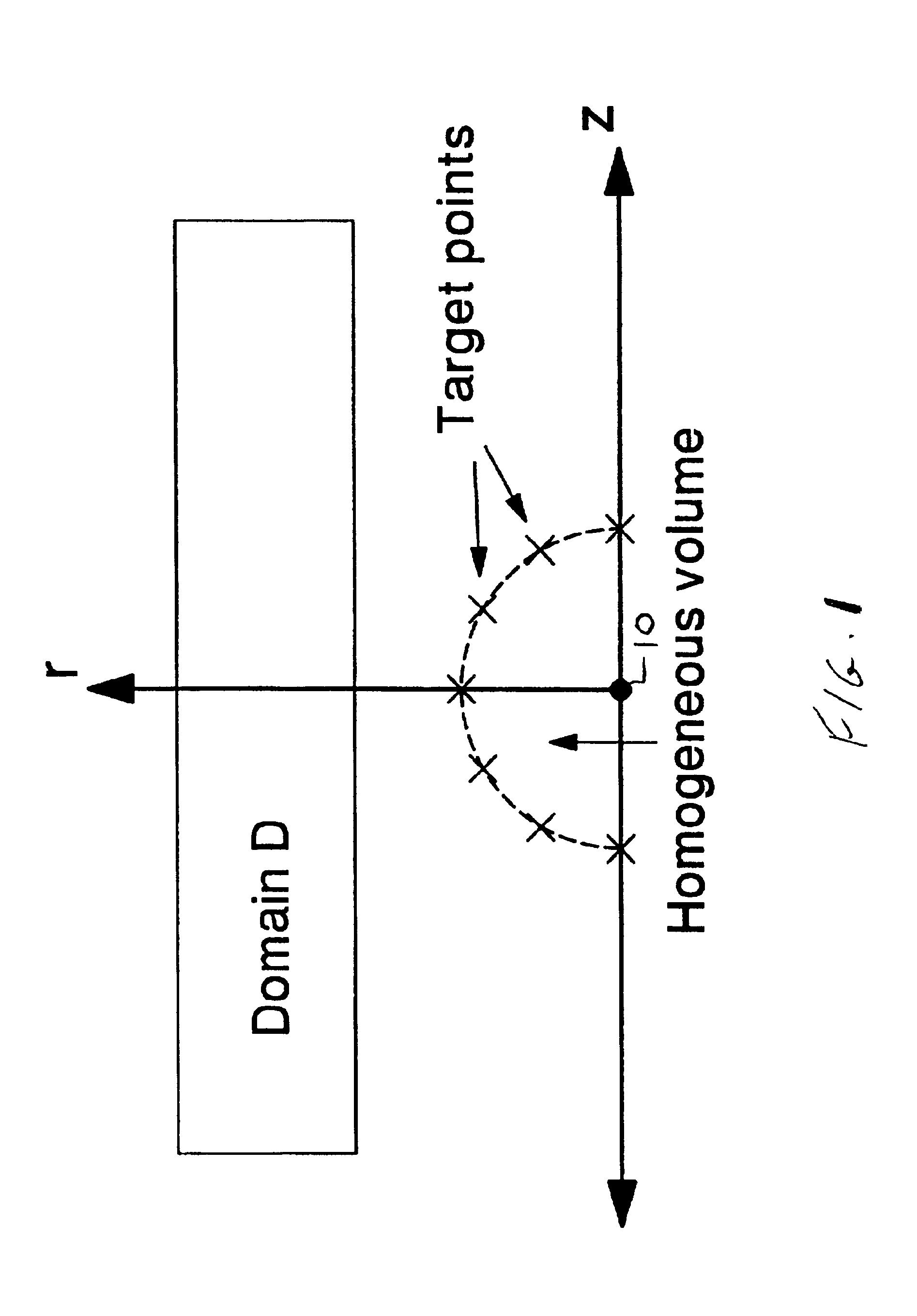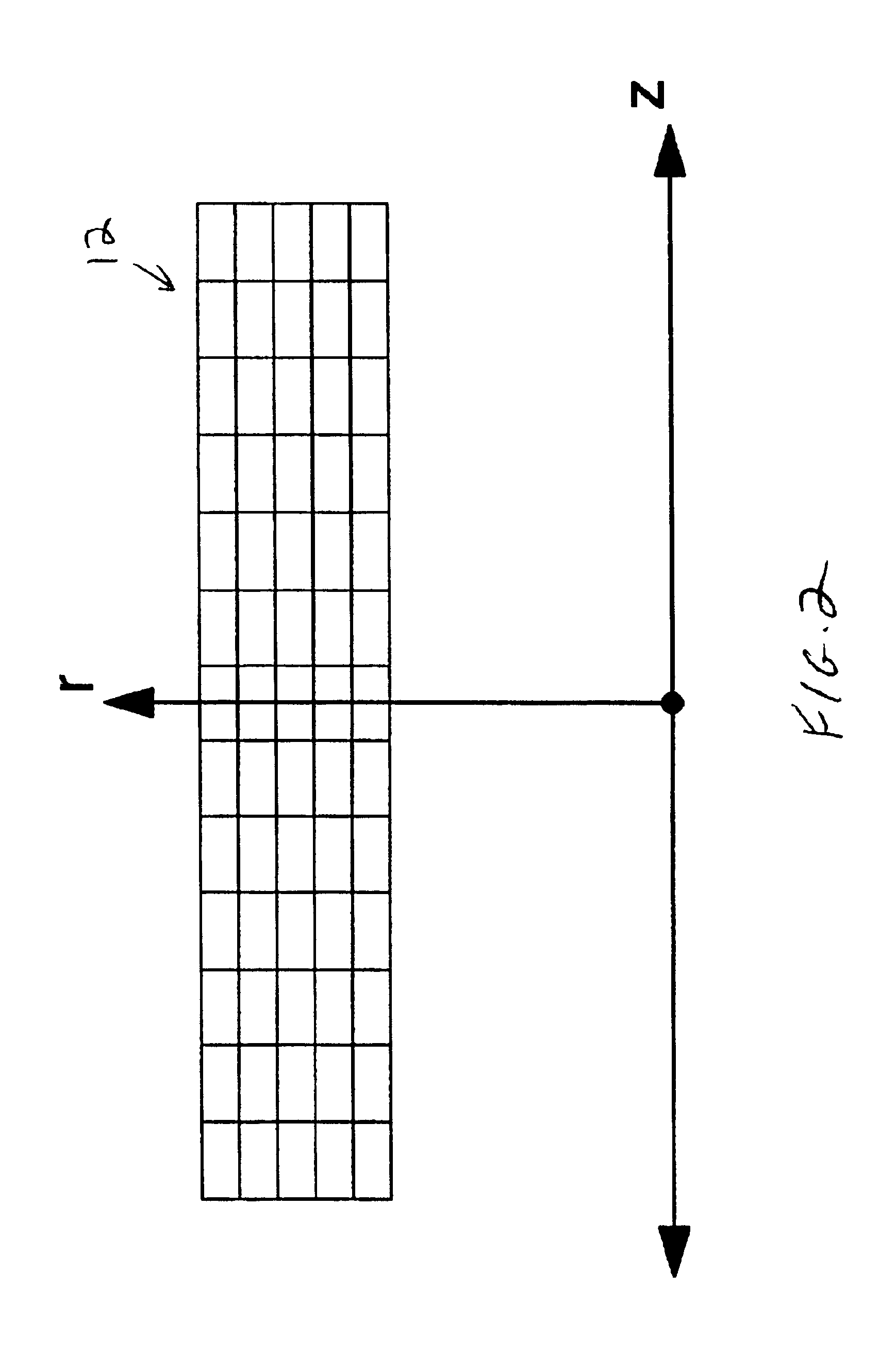Methods for optimizing magnetic resonance imaging systems
a magnetic resonance imaging and optimization technology, applied in the field of optimizing magnetic resonance imaging systems, can solve problems such as undesirable requirements, and achieve the effects of minimizing the volume of the coil, reducing the power consumption of the resistive coil, and accurate and efficient determination of the arrangemen
- Summary
- Abstract
- Description
- Claims
- Application Information
AI Technical Summary
Benefits of technology
Problems solved by technology
Method used
Image
Examples
examples
VI. RESULTS AND EXAMPLES
[0060]In order to illustrate the optimization method, I apply it to two different examples. First I compute the minimum volume coil arrangement for a magnet that is comparable to a design proposed in the seminal work M. W. Garrett, “Thick cylindrical coil systems for strong magnetic fields with field or gradient homogeneities of the 6th to 20th order,” J. Appl. Phys., vol. 38, no. 6, pp. 2563-2586, 1967 (“Garrett”). In this paper, Garrett gives numerous coil arrangements that generate uniform fields. However, these arrangements are not optimized in any systematic manner. I choose one simple example and demonstrate how my method can lead to an arrangement with the same external geometry, current density magnitude, field strength and homogeneous volume, but with a significantly smaller coil volume. I also consider varying the current density magnitude and show how to minimize the power consumption for resistive coils. As a second example, I minimize the coil vo...
PUM
 Login to View More
Login to View More Abstract
Description
Claims
Application Information
 Login to View More
Login to View More - R&D
- Intellectual Property
- Life Sciences
- Materials
- Tech Scout
- Unparalleled Data Quality
- Higher Quality Content
- 60% Fewer Hallucinations
Browse by: Latest US Patents, China's latest patents, Technical Efficacy Thesaurus, Application Domain, Technology Topic, Popular Technical Reports.
© 2025 PatSnap. All rights reserved.Legal|Privacy policy|Modern Slavery Act Transparency Statement|Sitemap|About US| Contact US: help@patsnap.com



